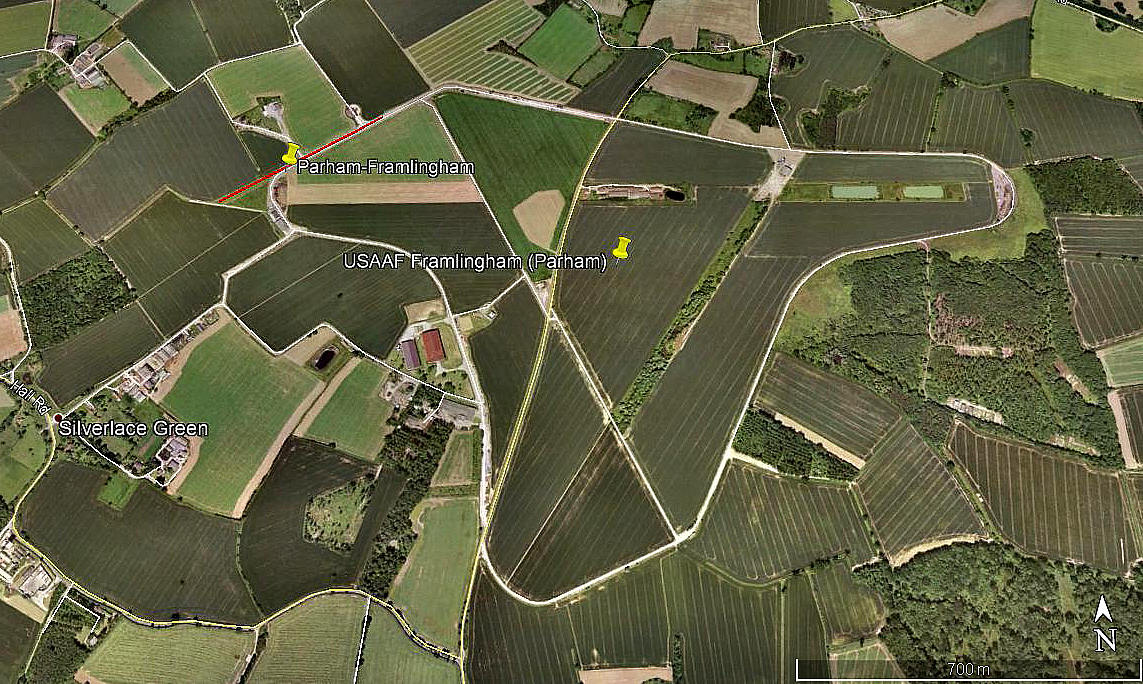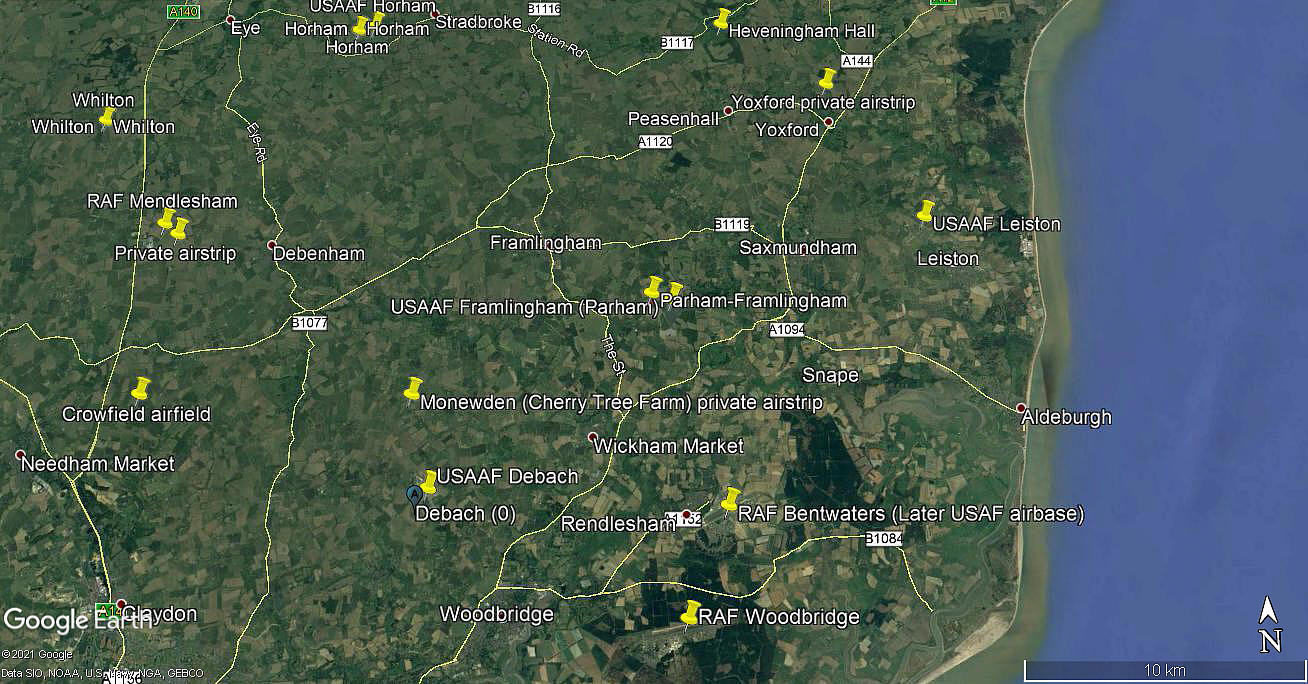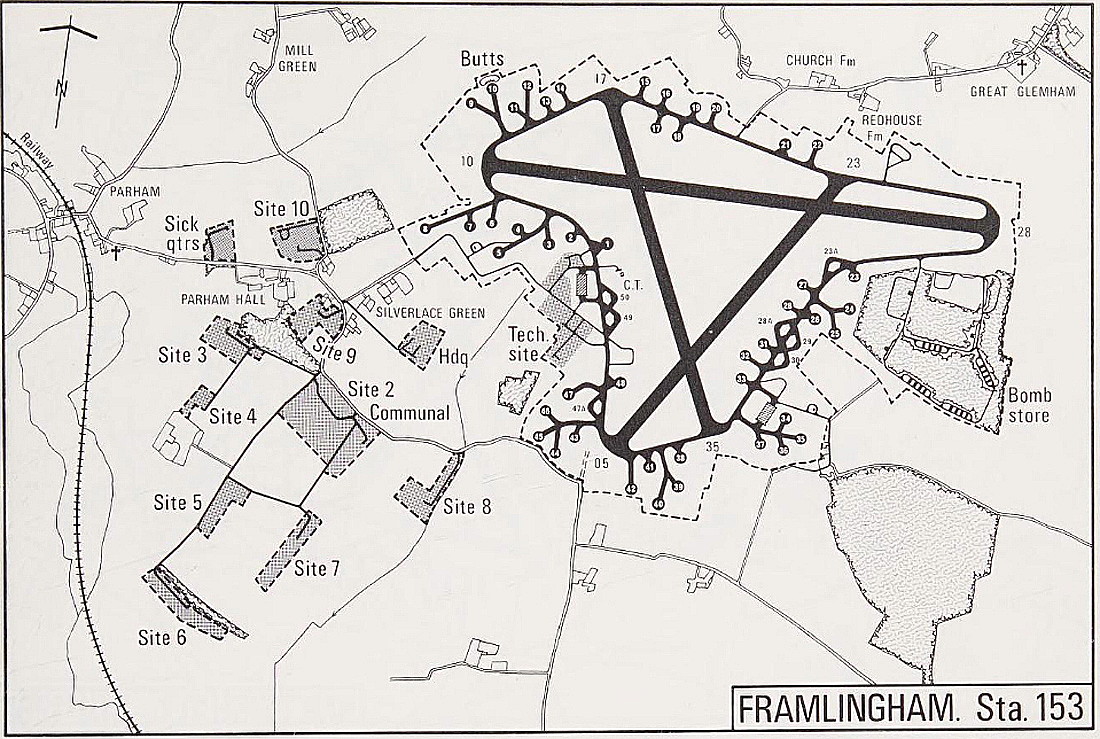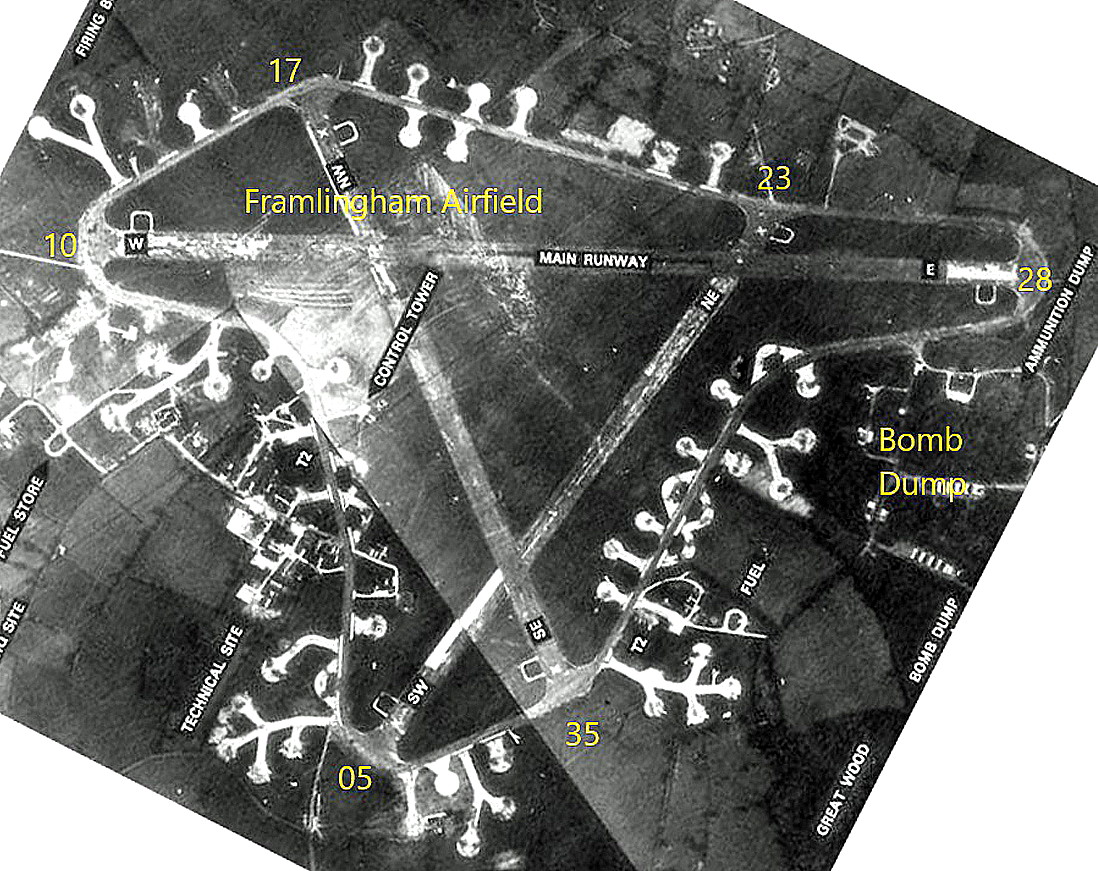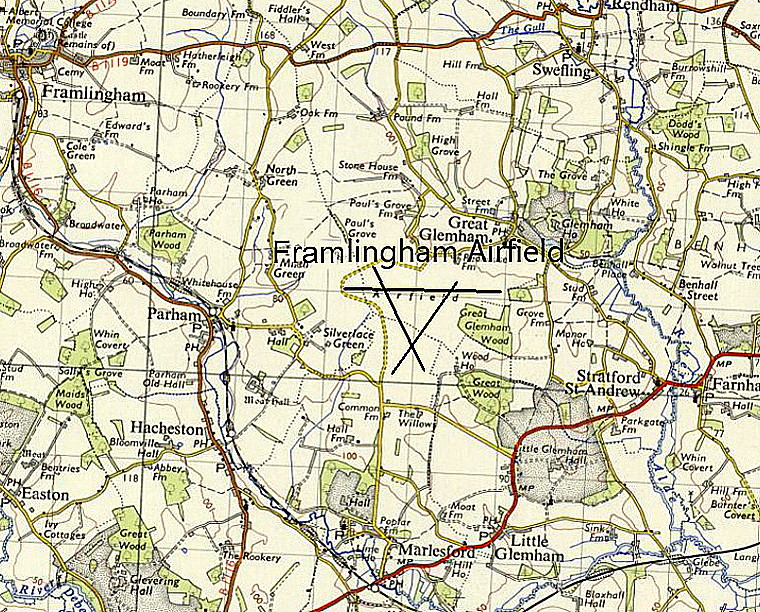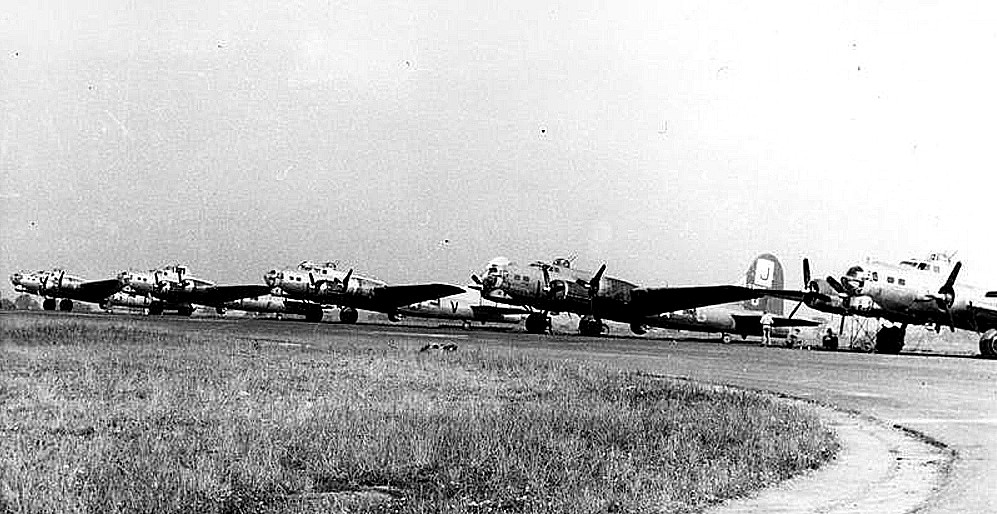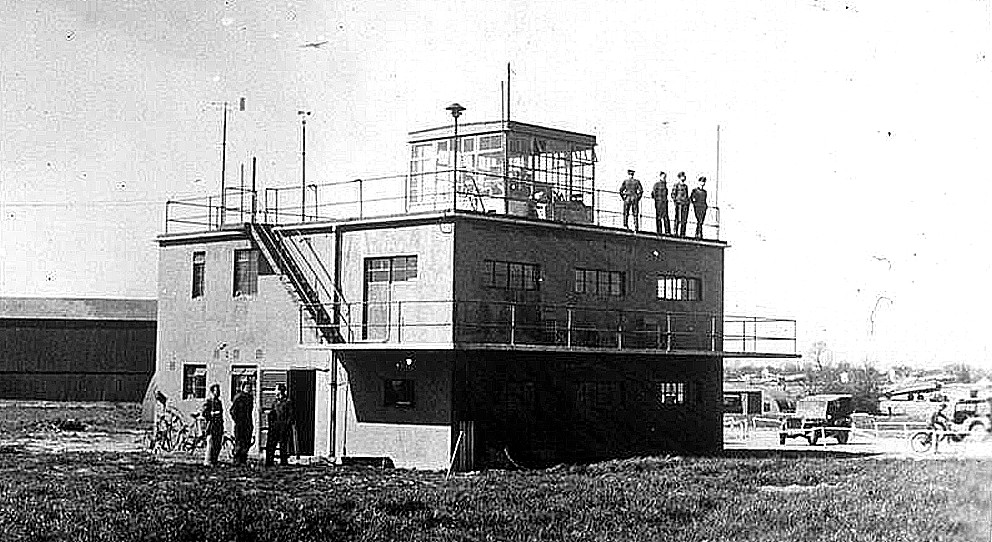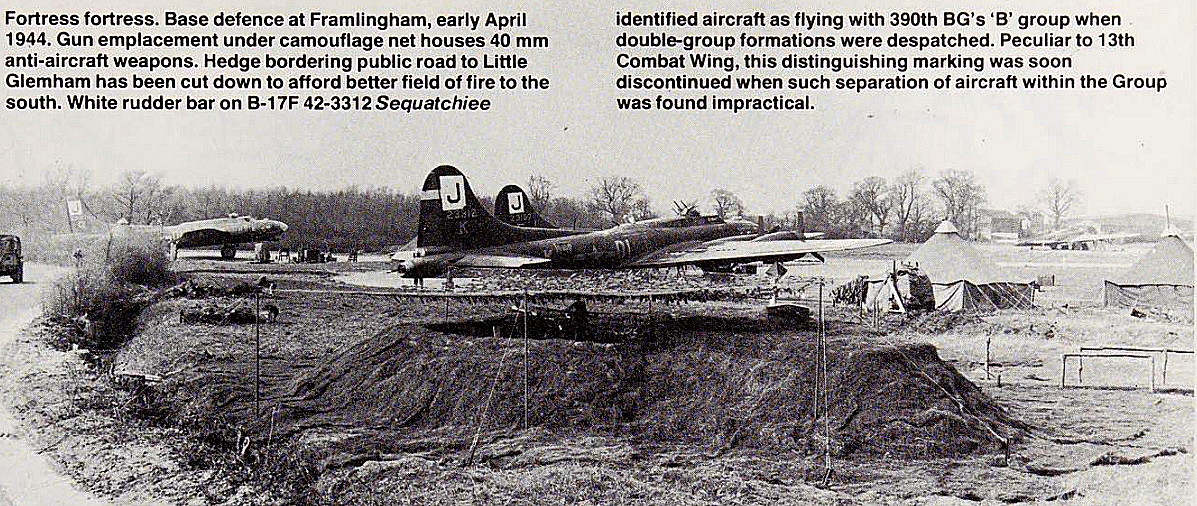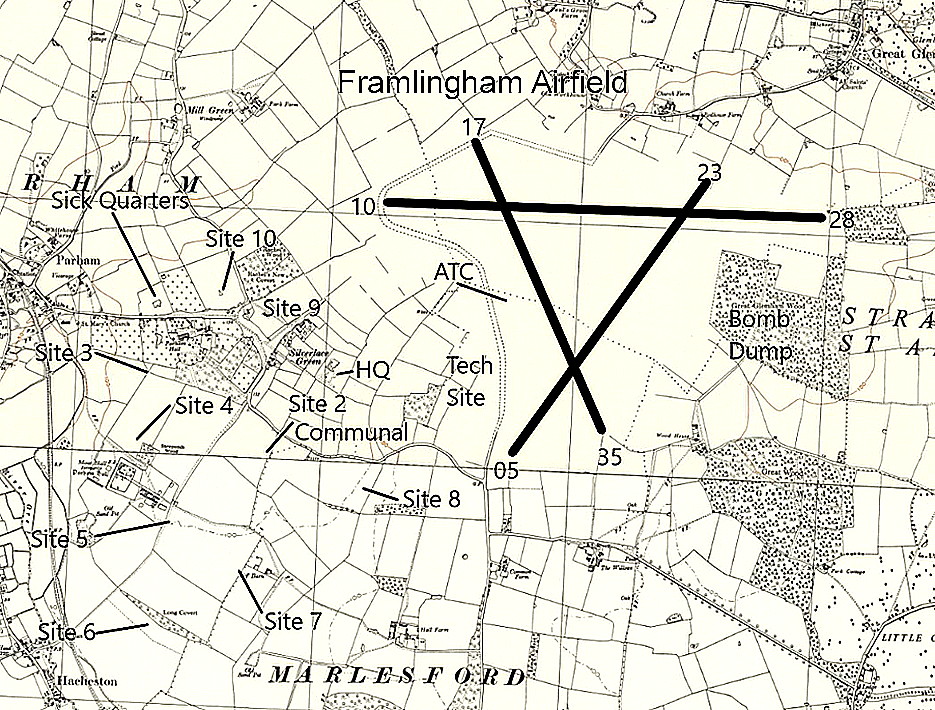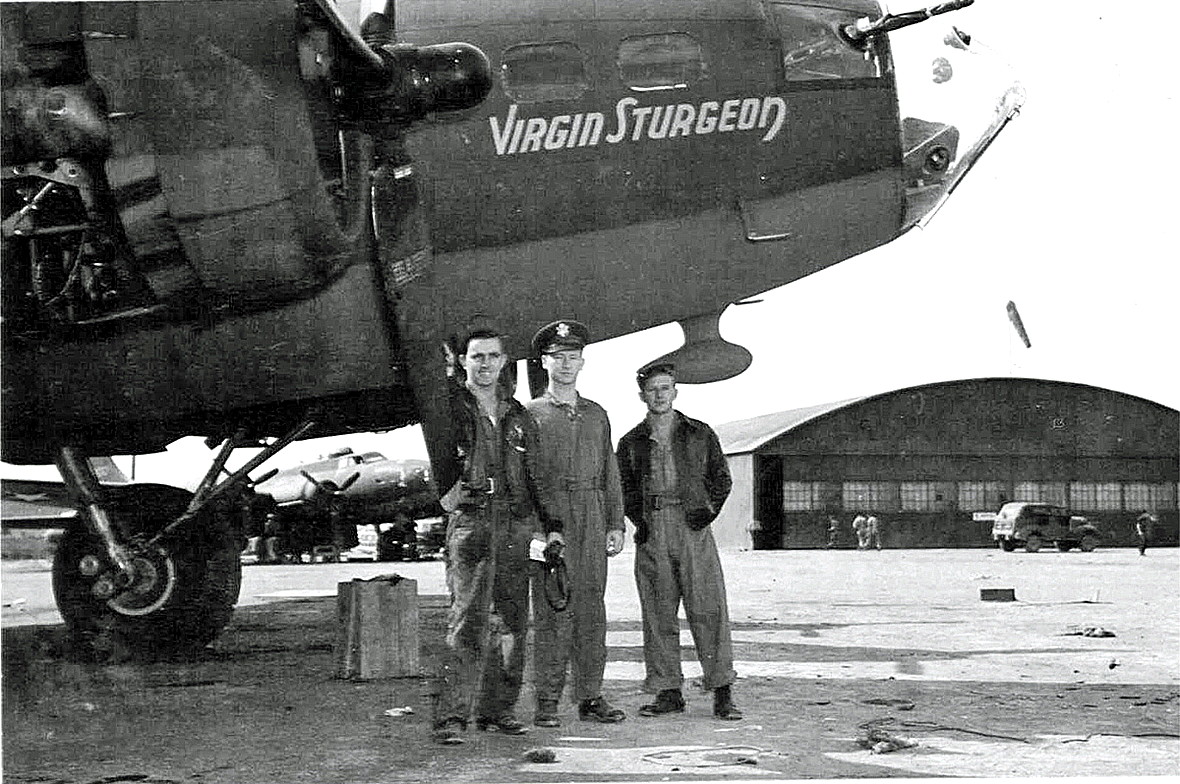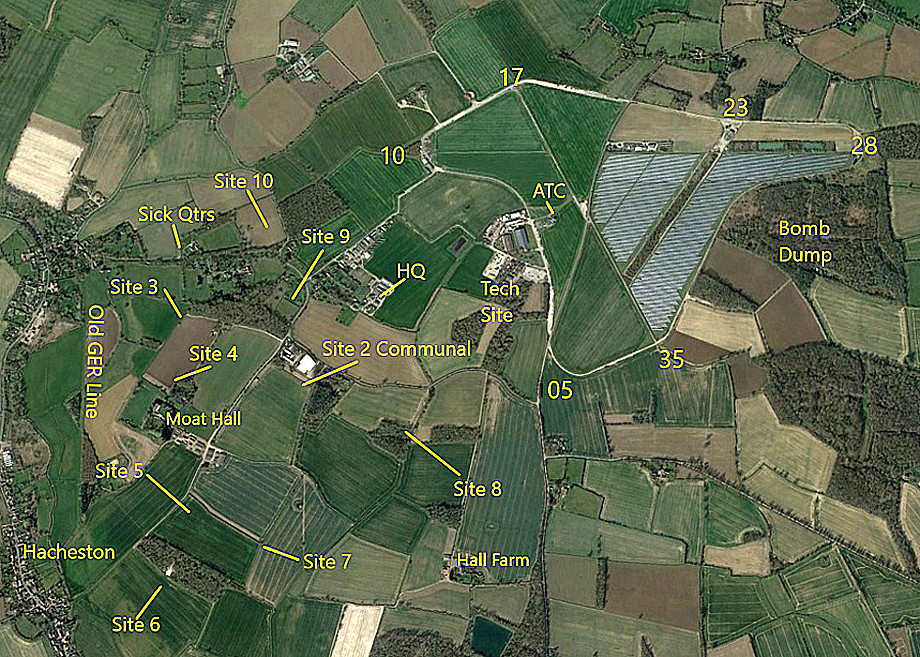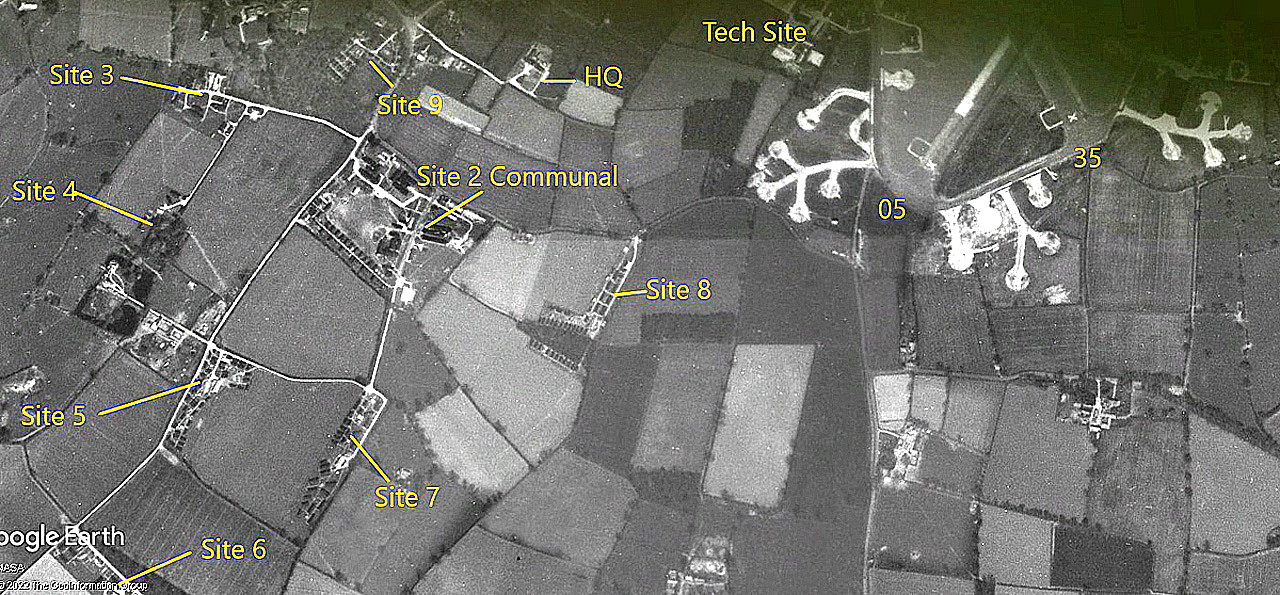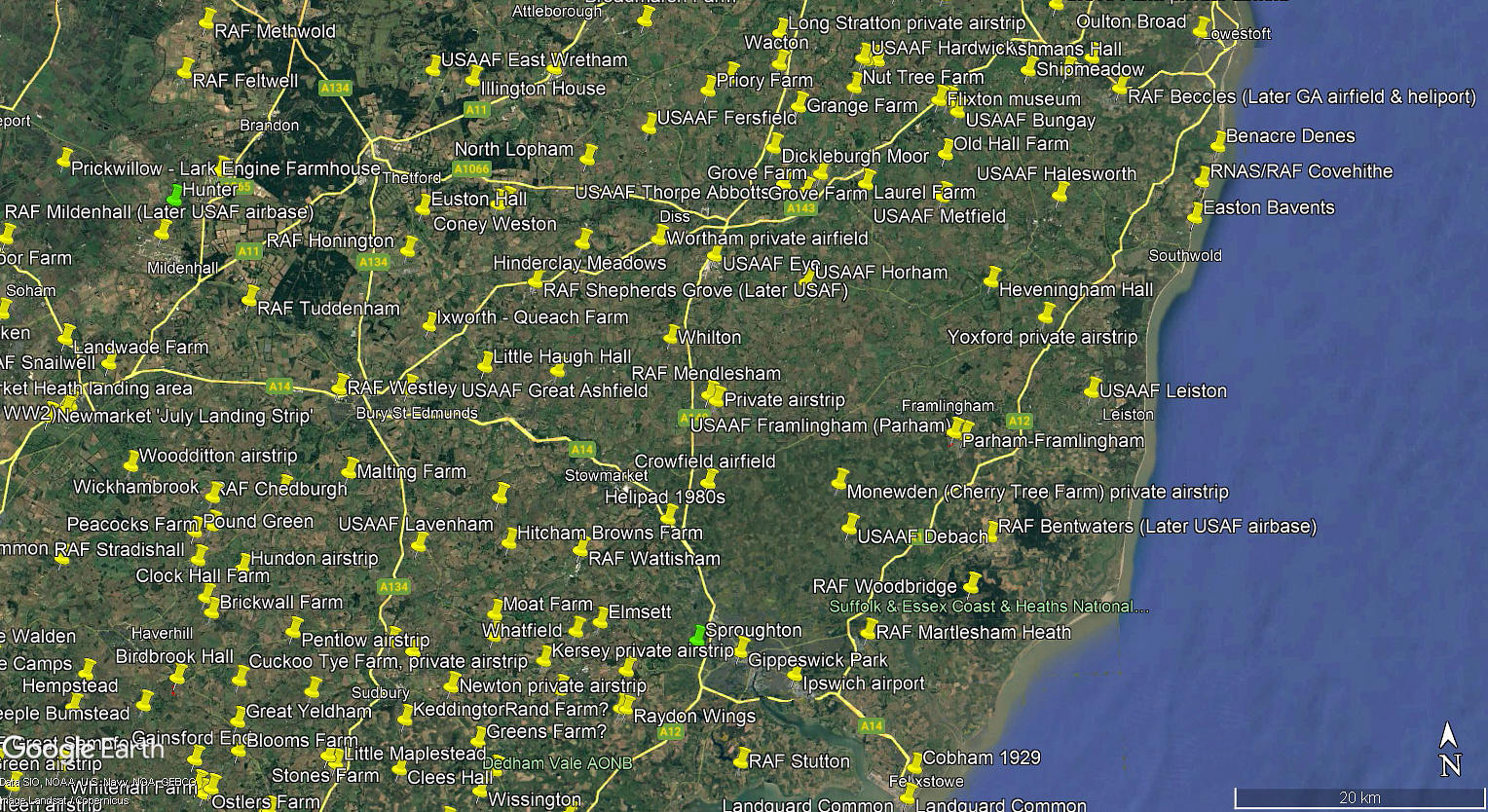Framlingham
FRAMLINGHAM: Military aerodrome later private airfield (Aka PARHAM, see seperate entry)
Note: This first picture was obtained from Google Earth ©. The local area view is from my Google Earth © derived database.
Military users: WW2: 8th USAAF
35th Combat Bombardment Wing 95th Bombardment Group (Heavy)
334, 335, 336, 412 Sqdns (Boeing B-17 Flying Fortress)
Note: The 95th Bombardment Group arrived here on the 12th May 1943 and flew their first missions the next day. After suffering huge losses on raids to the Continent, they transferred to nearby RAF HORHAM on the 15th June to regroup.
13th Combat Bombardment Wing 390th Bombardment Group (Heavy)
568, 569, 570 & 571 Sqdns (Boeing B-17 Flying Fortress)
Note: The 390th Bombardment Group arrived on the 4th July 1943, beginning combat missions on the 12th August. Their main targets before D-Day appear to have been; Bremen, Cologne, Frankfurt, Mannheim, Merseburg, Regensburg, Schweinfurt and Zeitz. The 390th flew its last combat mission on the 20th April 1945. In total they flew over three hundred missions dropping around 19,000 tons of bombs. This was at a cost of losing 181 aircraft and seven hundred and fourteen airmen were killed.
Operated by: 2001: Mr P Kindred
Location: SW of Great Glemham, E of Parham & 3nm SE of Framlingham
Period of operation: Military 1943 to 1945. A period or possibly periods of later civil activity uncertain but a part of the original WW2 aerodrome was still being used in 2003. Indeed, in 2015 it appears that three aircraft were based here.
Runways: WW2: 10/28 1829x46 hard 17/35 1280x46 hard
05/23 1280x46 hard
2001 to 2003: 06/24 450x10 hard
(06/24 also had a 180 metre grass extension available)
A MICHAEL T HOLDER GALLERY
We have Mike Holder, a great friend of this 'Guide', to thank for the following items.
The photo of the B-17s lined up, and the control tower are from the American Air Museum. The photo of the base defense installation is from the Mighty Eighth War Manual by Roger A Freeman.
The first picture of ground crews appearing to inspect their aircraft as they taxy, and the three crew members standing in front of the B-17, 42-30334, are also from the American Air Museum.
Only a guess on my part, but as they are only using the outboard engines, suspect this is after a raid? To save fuel and engine condition. Before taking-off on a raid all four engines would be running to get them thoroughly warmed up.
The area view is from my Google Earth © derived database. The 1945 aerial vertical is mainly of the domestic part of the base.
What we need to remember, which I must admit came as a surprise to me although obvious of course, is that these USAAF air bases were in effect self-contained townships. And, in the most part were only operational for two to three years at best. A very good example to us all to illustrate just how incredibly costly, in every respect, waging war can be. A lesson still not learnt even today, so why oh why do we, (and that does not include the vast majority), still persist?
A sad reflection on the human race. When younger I used to think I was an optomist, but now realise that in fact I'm a pessimist. Reason being that an optomist thinks we live in the best of all possible worlds. The pessimist fearing that this may well be the case! In closing though it is well worth recording that, in the week before V-E Day, the 390th B.G. were dropping food supplies to the Dutch. And of course, similar attempts to alleviate suffering are still going on.
NOTES: Many years ago I made these notes: Although I’d barely heard of it until a few years ago when given a job to collect some aeroplane parts from here, once ‘on site’ it was clear this was once a pretty big WW2 airbase as a few of the essential residual signs still exist. When researching this 'Guide' I was impressed to discover that 2894 USAAF personnel were based here in late 1944 during it’s brief military existence.
In fact I discovered this aerodrome was one of many similar USAAF bomber bases in England during WW2, with a similar strength to: ATTLEBRIDGE, BIRCH, CHELVESTON, DEENTHORPE, EYE, GRAFTON UNDERWOOD, HARDWICK, KIMBOLTON, LITTLE WALDEN, MENDLESHAM, NORTH PICKENHAM, OLD BUCKENHAM, PODINGTON, RATTLESDEN, SNETTERTON HEATH, THORPE ABBOTTS and WENDLING etc.
We'd love to hear from you, so please scroll down to leave a comment!
Leave a comment ...
Copyright (c) UK Airfield Guide















